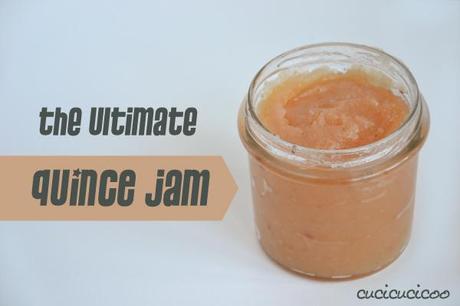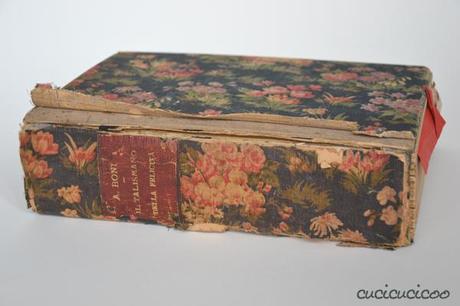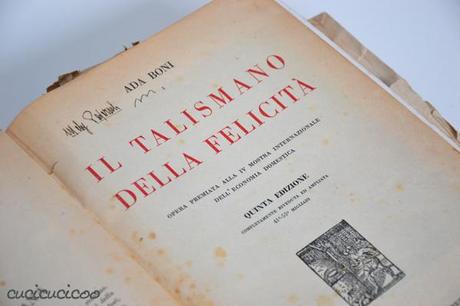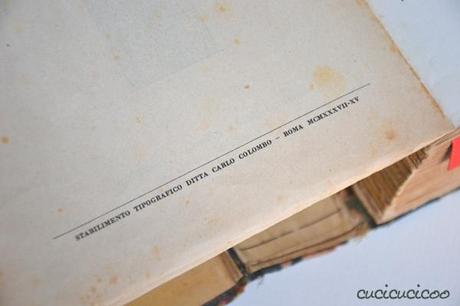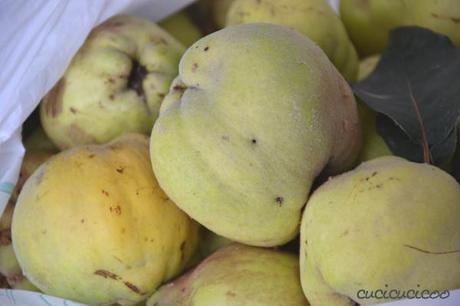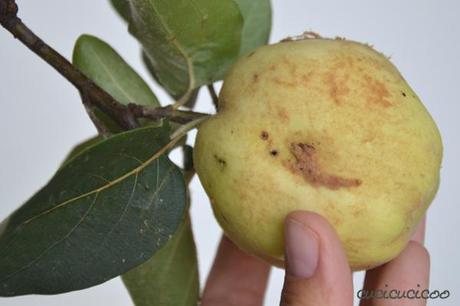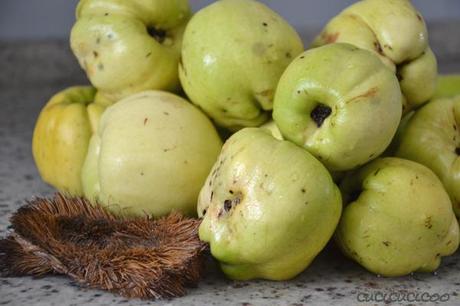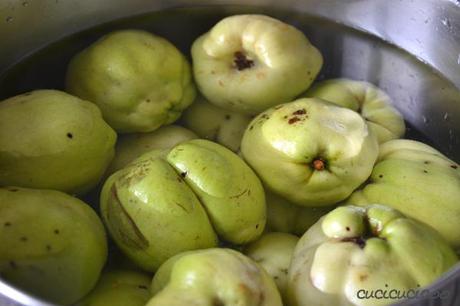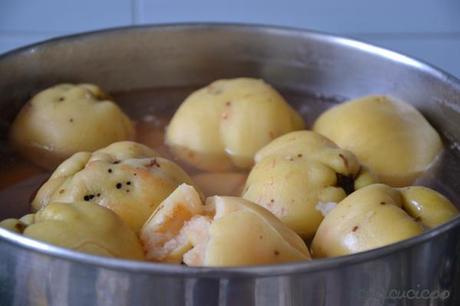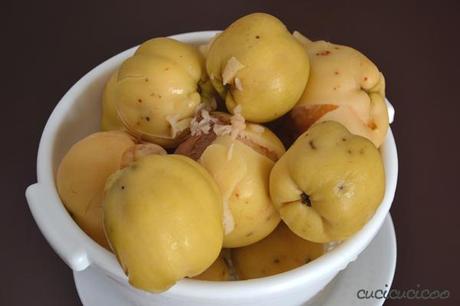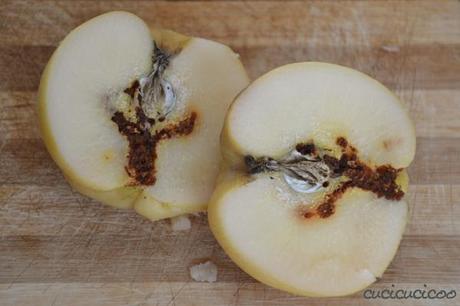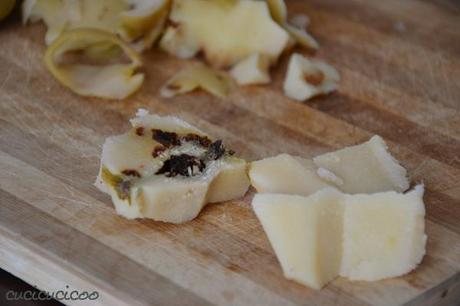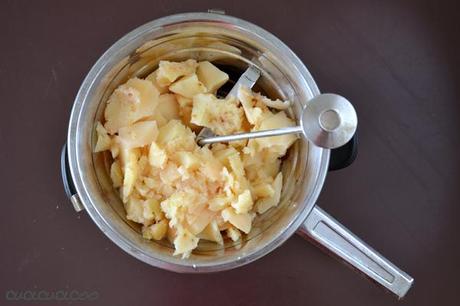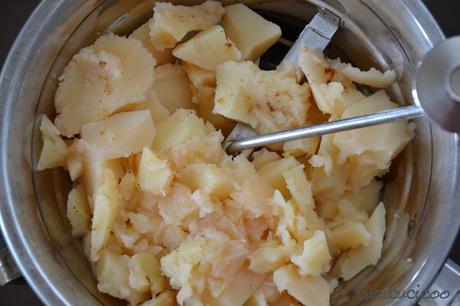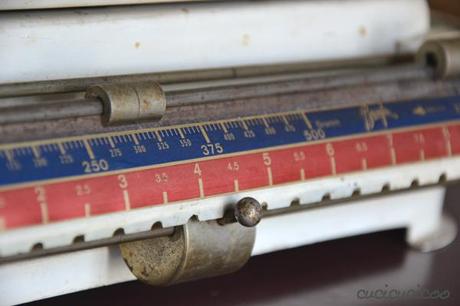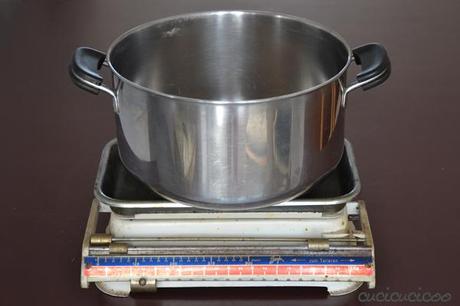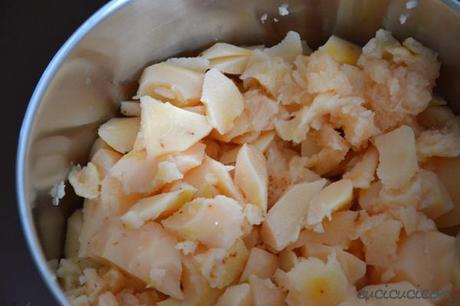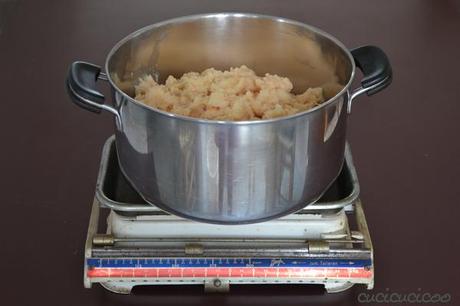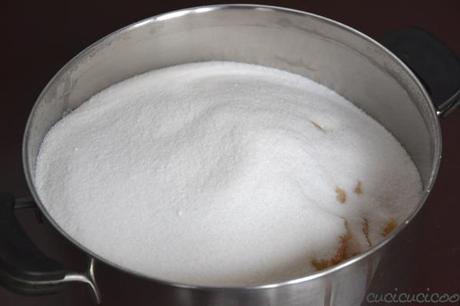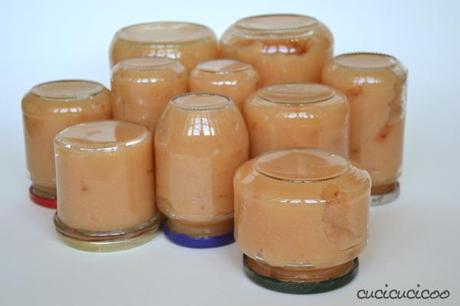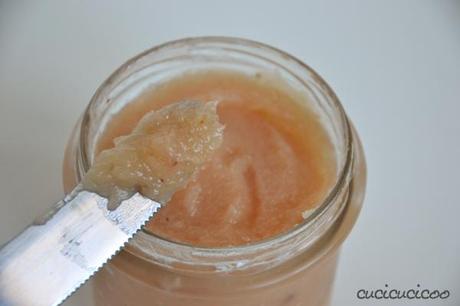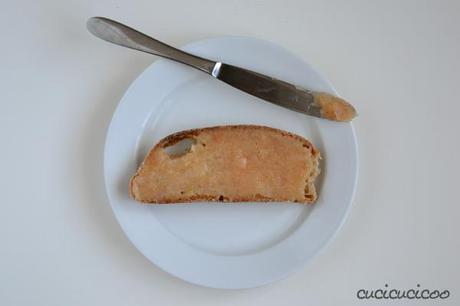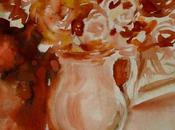Living in a place with a different language than the one you grew up with can be funny. I’d heard of the fruit quince before, but never knew what it was. In Italy I heard of the fruit mela cotogna (mela means apple), then finally saw them, made jam from them a couple of years, and only now finally realized that it’s quince. Apparently there used to be a lot of quince here in southern Italy but the only time I’ve seen them is from our friend, who has a tree of them. He’d always just fed them to his animals, but ever since we expressed interest in them, he’s given us one or two big bags of them in the fall.
The quince is pretty ugly and very hard. You can’t eat it raw like you do with a normal apple. My husband (and my people his age in our area) have horrible memories of a very sugary hard gelatin made with it, the cotognata. But quince jam is a whole different story.
So enter stage right a classic cookbook of Italian cooking,
Il Talismano della felicità.
This copy had been my husband’s grandmother’s and now is his mother’s.
I have to say that it’s pretty cool using a book published such a long time ago (this copy is from 1937) which is a part of my husband’s family’s history.
Except the recipe for quince jam is a bit vague and too sweet. It took me three years to perfect my recipe.
I started off with this large shopping bag full of quince. They’re pretty awful looking, more than usual, because they’re not sprayed so they have little critters in them.
As you can see, they are covered in brown fuzz.
But it comes right off in water with a vegetable brush.
Once they’re washed off, put them in a big pot and cover them with water (the ones in this photo really needed more water) and bring it to a boil. As they start cooking, they give off a wonderful and sweet scent.
Cook them until they get soft. It’s better not to cook them so much that they break apart, as the one in the foreground os this photo, but it’s not the end of the world.
Take them out of the water with a slotted
spoon and put them in a colander to let them cool off a bit. If you have asbestos hands, as my mother-in-law says, you can move right along without letting them cool, but I can’t handle the heat they retain.
And start peeling them with a sharp knife. This is easier if they’re more intact. If they’ve broken apart it’s harder to remove the pulp stuck to the peel. But if a bit of peel stays on, it’s not biggie and just adds a bit more texture to the jam.
This is the part that I hate. Remember all those little holes on the outside of the quince? Well, this is what those bugs do on the inside. This particular quince is in pretty good shape compare to some of the other ones we had. Sometimes I’d find cooked worms inside. Ick!
If your quince are like this too, gather up your courage (and patience) and cut away those yucky parts.
The recipe says to pass the quince through a sieve. (I’m not sure if that’s the right word. This type of kitchen
tool is mostly used to turn whole cooked tomatoes into sauce, leaving behind the peels.)
But I wouldn’t advise you do that. As this pulp is not at all liquidy, it takes a long time and a lot of energy to pass it through like this.
Luckily there’s a more modern way which is easy and quick. (As much as I like using old-fashioned methods, even I have my limits. The same goes for
my garlic salt.) Take out a scale which will measure up to 10 kg (or 20 pounds), more or less.
Weigh a big empty pot.
Fill it with your pieces of cleaned quince.
And here’s the modern solution: the immersion blender or hand blender. Blending the pulp gives you the same end result as passing it through the sieve, but in just a few minutes.
Weigh the pot full of blended fruit. Subtract the weight of the empty pot from this second full weight, and you’ll have the weight of the fruit pulp. In my case the empty pot weighed 1560 grams and the full one 4820 grams, so I had 3260 grams (over 7 pounds) of pulp.
Start sterilizing your jars. I really like doing this in the oven as I learned from Rose di Burro (where I got the recipe of orange lemon marmalade which is absolutely fantastic!) You put the washed jars inside a cold oven, turn it on to 160°C (320°F) and leave them in there for 30 minutes. You fill them up while they’re still hot. The caps, on the other hand, get boiled for five minutes.
The recipe says to add the same weight in sugar as the weight of quince pulp, but I don’t like jams that are too sweet. I found the best ratio to be 2/3 of the pulp’s weight in sugar. So in my case I added 2100 grams (about 4.5 pounds) of sugar. You will also need lemon juice, one tablespoon for every 400 grams (14 ounces) of pulp. It’s better if you prepare it now, before turning on the stove.
I don’t have pictures of this part because I couldn’t leave the pot alone as it cooked. You need to stire the pulp and sugar constantly at medium heat. At first it will be very hard, but after a little it gets more manageable. You also have to be careful of the bubbles and to not let it stick to the bottom of the pot. Differently from other types of jam and marmalade, it never gets liquidy, but remains at the consistency of a cream.
After about 2o minutes of cooking, turn off the heat, add the lemon juice, stir it in well and put inside the sterilized jars. Put the caps on tight and turn them upside down. Once they’ve cooled you can turn them back around and they should have become vacuum-sealed. If not (the center of the cap pops back up when pushed), it’s better to keep the jar in the fridge. (My big bag of quince made about 13 different-sized jars.)
The consistency is easily spread but not liquid. The flavor is sweet with a touch of tartness. The smell and taste are just amazing.
It’s delicious on a slice of bread, perfect for breakfast or a snack. It’s also a great gift idea (and in my experience always much appreciated)… but perhaps it’s even better if you keep it all for yourself!
